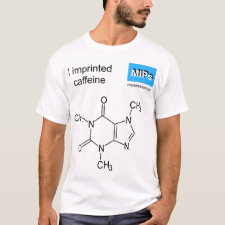
Authors: Farrington K, Magner E, Regan F
Article Title: Predicting the performance of molecularly imprinted polymers: Selective extraction of caffeine by molecularly imprinted solid phase extraction.
Publication date: 2006
Journal: Analytica Chimica Acta
Volume: 566
Issue: (1)
Page numbers: 60-68.
DOI: 10.1016/j.aca.2006.02.057
Alternative URL: http://www.ul.ie/~ces/MagnerGroupSite/publications/anal_chim_acta_apr2006.pdf
Abstract: A rational design approach was taken to the planning and synthesis of a molecularly imprinted polymer capable of extracting caffeine (the template molecule) from a standard solution of caffeine and further from a food sample containing caffeine. Data from NMR titration experiments in conjunction with a molecular modelling approach was used in predicting the relative ratios of template to functional monomer and furthermore determined both the choice of solvent (porogen) and the amount used for the study. In addition the molecular modelling program yielded information regarding the thermodynamic stability of the pre-polymerisation complex. Post-polymerisation analysis of the polymer itself by analysis of the pore size distribution by BET yielded significant information regarding the nature of the size and distribution of the pores within the polymer matrix. Here is proposed a stepwise procedure for the development and testing of a molecularly imprinted polymer using a well-studied compound--caffeine as a model system. It is shown that both the physical characteristics of a molecularly imprinted polymer (MIP) and the analysis of the pre-polymerisation complex can yield vital information, which can predict how well a given MIP will perform
Template and target information: caffeine
Author keywords: molecular imprinting, rational design, Pore size distribution, molecular modelling, solid phase extraction, caffeine



Join the Society for Molecular Imprinting

New items RSS feed
Sign-up for e-mail updates:
Choose between receiving an occasional newsletter or more frequent e-mail alerts.
Click here to go to the sign-up page.
Is your name elemental or peptidic? Enter your name and find out by clicking either of the buttons below!
Other products you may like:
 MIPdatabase
MIPdatabase









